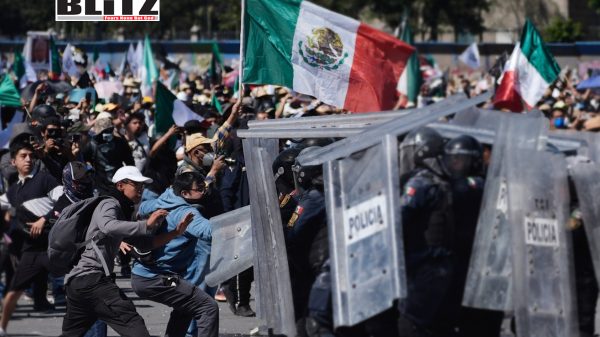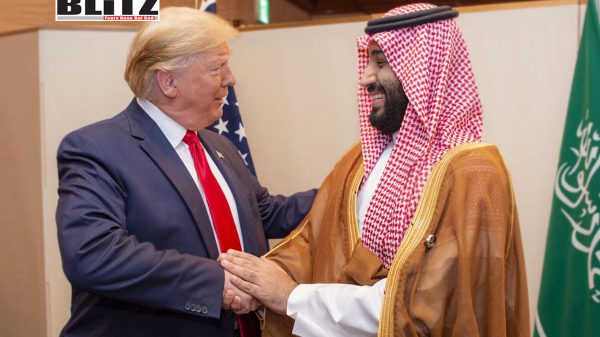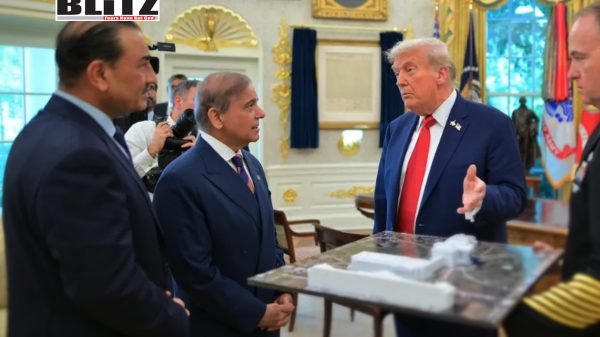Global climate summit warns world to act as time rapidly runs out
- Update Time : Monday, November 17, 2025

As nearly 50,000 delegates representing more than 190 countries descended on the Brazilian city of Belem earlier this week for COP30, the mood was markedly different from the hopeful spirit that once defined global climate gatherings. Instead of exuberant expectations for new milestones, the two-week negotiations appear poised to confront a colder truth: the world is running out of time, political will, and public patience. Increasingly, the question is no longer about crafting another climate deal but about implementing those already signed – many of which remain unfulfilled.
At the center of this reckoning is Andre Correa do Lago, president of this year’s UN climate talks, who issued a stark warning even before the conference formally began. According to him, the Global North has lost much of its enthusiasm for tackling the climate emergency, succumbing to domestic political divisions, short-term economic considerations, and rising climate skepticism. In contrast, the Global South – the world region least responsible for global warming but most affected by it – continues to show resilience and a willingness to adapt. But adaptation alone cannot stop a crisis overwhelmingly driven by industrialized countries.
This dynamic has become a recurring paradox at UN climate summits. While countries in Africa, Asia, Latin America, and the Pacific innovate to survive rising sea levels, deadly heatwaves, and water scarcity, the world’s largest historical polluters continue to delay the deep emissions cuts required to meet their own commitments. And so, as delegates gather once again for an annual climate pilgrimage, many ask: what is the purpose of these meetings if the will to implement decisive action remains largely absent?
Perhaps the most glaring signal of global climate malaise is the failure – or outright refusal – of countries to submit updated nationally determined contributions (NDCs), the backbone of the Paris Agreement. These plans outline each country’s commitments to limit emissions and adapt to climate impacts by 2035. Under the 2015 Paris framework, nations must revise their NDCs every five years, strengthening ambitions based on scientific data and technological advancements.
Yet by the end of last month, only 64 out of 190+ countries had submitted their updated plans. This alarming shortfall raises doubts about whether the global community takes COP30 seriously at all. Ten years after the Paris Agreement – the most celebrated climate accord in history – the world is dangerously off track.
The failure comes amid undeniable evidence that the climate crisis is accelerating faster than even pessimistic models predicted. According to the European Union’s Copernicus Climate Change Service, 2024 became the hottest year ever recorded, and the first year in history to surpass the 1.5°C warming threshold across a full calendar year. Scientists expect 2025 to break that record again – an ominous sign.
If nations stick to their current pace, the world is not merely drifting toward a 1.5°C overshoot – it is sprinting toward it.
The UN Emissions Gap Report 2025 underscored the scale of the challenge: global emissions would need to drop 35% by 2035 to keep warming below 2°C, and 55% to stay under 1.5°C. Given the world’s political mood, these targets appear increasingly out of reach. The report’s conclusion was blunt: with the magnitude of cuts required and the short timeframe remaining, temperatures are likely to exceed the goals of the Paris Agreement.
Scientists, activists, and vulnerable communities continue to repeat the same warnings: rising seas, stronger hurricanes, disappearing species, wildfires, droughts, and catastrophic losses of life and biodiversity. Yet global emissions continue to rise. The frustration within climate circles is palpable. How many times can the world sound the alarm before governments act with urgency?
The sequence has become painfully familiar. A COP is held. Negotiators spend days – often nights – maneuvering over wording, finance commitments, and procedural disputes. An agreement is drafted and hailed as historic. Months later, its promises are watered down, delayed, or forgotten entirely as political priorities shift elsewhere.
This cycle has left many questioning whether the COP process is still fit for purpose.
Brazil, the host of this year’s summit, is attempting to break this cycle. It has introduced the concept of mutirão, from the Tupi-Guarani language, meaning a collective effort in which a community comes together to work for a shared benefit. The idea is to transform COP30 from a negotiation-based event into a continuous global mobilization – a climate effort stretching beyond summits and anchored in real-world progress.
In theory, mutirão emphasizes collaboration, shared responsibility, and momentum. In practice, skeptics argue it risks becoming mere symbolism in a world struggling to maintain even the minimums agreed upon in the Paris framework. Given that many nations have failed to submit updated NDCs – a basic procedural requirement – critics doubt whether such a vision can be taken seriously.
Yet Brazil’s proposal also reflects a deeper truth: the traditional climate diplomacy model is losing effectiveness. Public interest has waned. Climate fatigue is rising. And powerful lobbies and political movements continue to push denialism or delay.
The decline in public attention to climate issues is partly the result of global fatigue. With wars, financial instability, elections, and geopolitical tensions dominating headlines, climate change – despite being an existential threat – competes for attention. This problem is compounded by a growing counter-movement of climate skeptics and political actors who dismiss scientific evidence as exaggerated or ideologically driven.
While these groups remain in the minority globally, their influence in major emitters – particularly in the Global North – is growing. Their rise slows action, weakens legislation, and undermines global cooperation.
Despite the setbacks, COP30 is not entirely overshadowed by pessimism. China, often criticized for its massive emissions, has also emerged as the world leader in building the infrastructure needed for a low-carbon future. As Correa do Lago highlighted, China is not only the largest emitter – it is also the world’s biggest producer and consumer of renewable energy. In 2024 alone, China’s solar and wind capacity under construction exceeded that of the rest of the world combined. Its renewable manufacturing boom has helped lower the global prices of solar panels and wind turbines, making clean energy more accessible worldwide.
Meanwhile, nuclear energy is witnessing a revival, especially in Asia. In 2024, nuclear reactors generated more electricity than at any point in history, demonstrating that technology and political will can accelerate the energy transition when aligned.
These examples reveal a crucial insight: climate action is not impossible. It is a matter of political determination, resource allocation, and societal commitment.
If nations truly embrace a green industrial transformation, the economic opportunities could be immense. Renewable energy, green manufacturing, sustainable agriculture, eco-friendly urban design, and climate-resilient infrastructure could reshape global economies and define the world’s new centers of influence.
For developing nations, this transition represents not just survival but a chance to rise. Countries investing in green technologies today could become global leaders of tomorrow – politically, economically, and diplomatically.
As COP30 unfolds in Belem, the world faces a stark choice: continue down a path of partial implementation and political hesitation – or finally match words with action. The next decade will determine whether the Paris Agreement was an aspirational document or the foundation of a real global effort.
For now, the planet continues to warm, the warnings grow louder, and the window for meaningful action narrows. What remains to be seen is whether global leaders will treat COP30 not as another symbolic gathering, but as the urgent call to action it must become.










